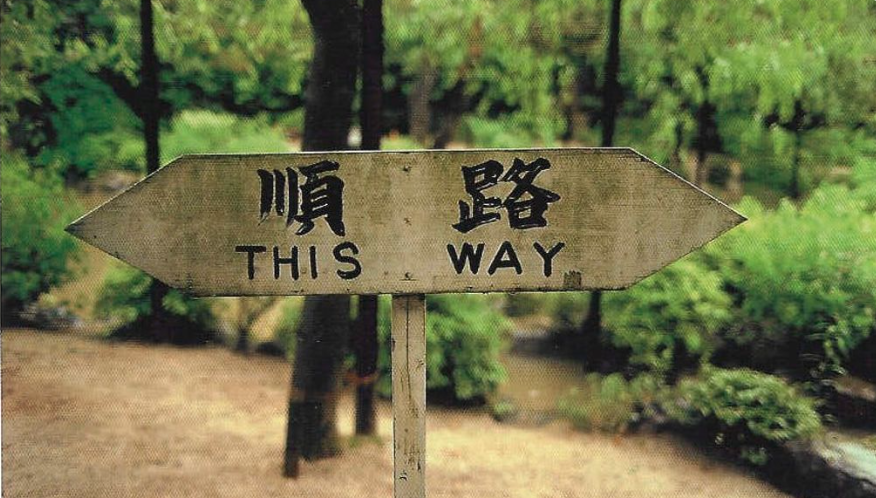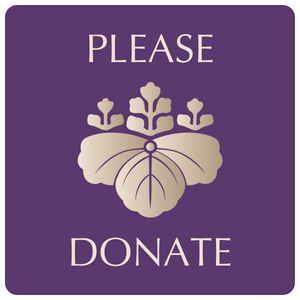“Those who seek liberation for themselves alone cannot become fully enlightened. Though it may be said that one who is not already liberated cannot liberate others, the very process of forgetting oneself to help others is in itself liberating.”
(Muso Soseki)
In the Zen tradition we inherit, with a strong focus on individual awakening, social and environmental action has sometimes been viewed as a secondary concern – following on from seeing one’s true nature or ‘Kensho’, but inevitably dualistic if pursued prior to this. This is summed up in the idea that, ‘one who is not already liberated cannot liberate others’. There is wisdom in this view – from a training perspective – but it also can be limiting and is itself dualistic.
Since the 1970’s, the movement of ‘Social Engaged Buddhism’ has championed the idea that social engagement is not outside of the project of Zen and Buddhism and is indeed essential to it. This has been a teaching of respected modern masters including Thich Nhat Hahn, His Holiness the Dalai Lama, Bernie Glassman Roshi and Roshi Joan Halifax – to name some more illustrious teachers. It is also sits comfortably within our Sanbo Zen tradition – which has, as one of the three aims of Zen (mujodo no taigen) or ‘actualization of the Supreme Way in our daily life’ and holds as exemplary, the Bodhisattva ideal of Mahayanna Buddhism. This ideal is vividly pictured in the last of the Ten Oxherding Pictures, as the person ‘entering the marketplace’ with ‘bliss bestowing hands’. This person, with their wine gourd around their shoulder and dressed in ordinary clothes, is indistinguishable from the ordinary person and represents the most advanced practitioner. They are not in an isolated hut, on top of a lonely mountain, but engaged in the hub bub of life, with all parts of society – even the butchers and publicans – not necessarily wearing the clothes or speaking language of Buddhism – but helping all to realise their innate Buddha nature.
This year I have been privileged to participate in a year-long Socially Engaged Buddhist Training (SEBT), run by the Upaya Zen Centre, led by Roshi Joan Halifax and a rich faculty of teachers. The year is almost at an end, and it has been full one, with monthly and often bi-monthly talks, quarterly collegial meetings and undertaking of social engagement projects. The structure is a bit like a university course but in addition, the participants are encouraged to have a daily sitting practice and join for one or more of the online retreats.
It is just not possible to cover the rich content addressed over the year, but I can share or reflect on three key things I have learnt from it.
1) Realisation and compassion are cut from the same cloth.
Just as Dogen instructs on Practice and Realisation, Compassion and Realisation are not-two. Though we may ‘see through a glass darkly’ and are at times so caught up in our concepts we hardly see at all – we are never apart from the goal we seek in our training. This goal, often referred to as ‘awakening’ or ‘realisation’ – is no different from great compassion. There is of course nothing to gain in Zen, but maybe what we uncover through practice – as the small self, the encrusted I, becomes more brittle and at times falls-away, is a clearer appreciation of the truth of compassion and freer functioning as compassion in the world and as the world.
As our view broadens and becomes more inclusive, it does not leave anything out, and as such our field of practice includes everything: from our interior world, to the world of inter-personal and community relationships and also the social structures and environmental foundations within which they exist. As we become less stuck within our own certainties, we also become more able to meet people and situations where they are at and as the ‘Vow of Human Kind’ says (which we recite each week) ‘realise the right direction in which history should proceed’.
The more we glimpse the world of emptiness I think, the kinder we become to self and others and more appropriate in response to their needs. We also assume greater responsibility for others welfare. This is an important point I think, and worth elaborating on. It is a mischaracterisation to say the highest experience in Zen, is an empty equivalence, where anything goes. Certainly, an experience of emptiness is an important turning point, but we can’t stop there. To do so is to risk moral atrophy and the ‘Zen Sickness’ that great teacehrs like Hakuin spared no pains in criticising!
As already mentioned, what we should see develop out of a healthy Zen practice, is a growing awareness of our connection with others and desire for their welfare. So, to sum this up, one might say the activity of great compassion is based in groundlessness, is the ground of our being and knows no bounds.
2) Zen is an embodied practice and it doesn’t help us to by-pass suffering
That said, we need to start where we are at! Although ‘the boundless mind is unsurpassed’ – like a beautiful lotus flower, it is nurtured within the muddy water of our often-painful lives. Many times during the year, different teachers were consistent on the theme of ‘not turning away’ from suffering, acknowledging the ‘broken-heartedness’ and divisions within self and society and the importance of ‘showing-up’ to what is present within self, circumstance and society that is calling out to be healed. The Four Noble Truths were cited in this regard, and we were reminded the first noble truth was that of suffering which the Buddha never suggested we by-pass. When we do, we are more than likely avoiding the present moment and an important opportunity for awakening. This teaching made me see the Four Noble Truths in a different light. Not only as an Upaya (skillful means) for us ordinary people, unable to realise the highest truth, but rather as useful practice we might return to time and time again, to help us work with the challenges we face.
The other aspect of Zen and Social Engagement that became clear to me during the year is that it is an embodied process. This perspective, aligned with modern neurology and psychology was a recurring theme in the training. What I learnt from this, was that awareness of what the body is telling us in this moment, is a valuable source of wisdom, which we often overlook in our attempt to realise an ideal, forgetting of course that we are not separate from the ideal we are seeking. Attunement to the body, which I think our Zazen helps us with, is an indispensable guide on the path.
3) There’s no ‘right way’ to live a socially engaged life. It contextual, emergent and not attached to outcome.
This came up also as a theme during the year. As Social Worker, I am someone whose life has been constructed around overt social engagement – it is my vocation and it has been nourished deeply by Zen practice. But truth be told, we actually don’t need to do anything special to become socially-engaged, we just need to wake up to the fact we are already ‘in the thick of it’ and participate in wherever that is, more skilfully. There is also no prescribed way to be ‘socially engaged’. It will emerge out of our personality, experience and context and will be appropriate to those circumstances. As our view broadens with practice, so should our social engagement and the service we offer to all beings. Not everyone will be at the vanguard marching for change to an unjust system – though this is some people’s calling. Social engagement is everything from being kinder to those in our immediate vicinity, to building cultures of kindness within our home and community lives, to working within political and geo-political domains for truth and justice – and everything in-between. As Zen practitioners we must not be fixed on a particular method for change or an end goal – but be open to as much of life as we possibly can and to as many means and methods fro change appropriate to the circumstances within which we find ourselves.
A wonderful practice for this, which we have adopted in our Sun Mountain Sangha is of course the Three Tenets of the Zen Peacemakers which are –
1) Not knowing and letting go of fixed ideas about self and other
2) Bearing witness to the joys and suffering of the world
3) Compassionate action arising out of not knowing and bearing witness
These three tenets speak to the basic dimensions of our Zen practice: grounded within an experience of great peace, including a deep sense of connection with others and dynamic in its activity. These three aspects of course are not separate.
I would like to end with a wonderful verse from the Shodoka (my favourite within all of Zen literature I think) which captures this profound truth:
The moon shines on the river,
The wind blows through the pines,–
Whose providence is this long beautiful evening?
The Buddha-nature jewel of morality
Is impressed on the ground of my mind,
And my robe is the dew, the fog, the cloud, and the mist.
Richard Warner is a member and teacher at the Sun Mountain Zen centre in Brisbane and in 2021 has also participated in a year-long Social Engaged Buddhist Training at the Upaya Zen Centre.


